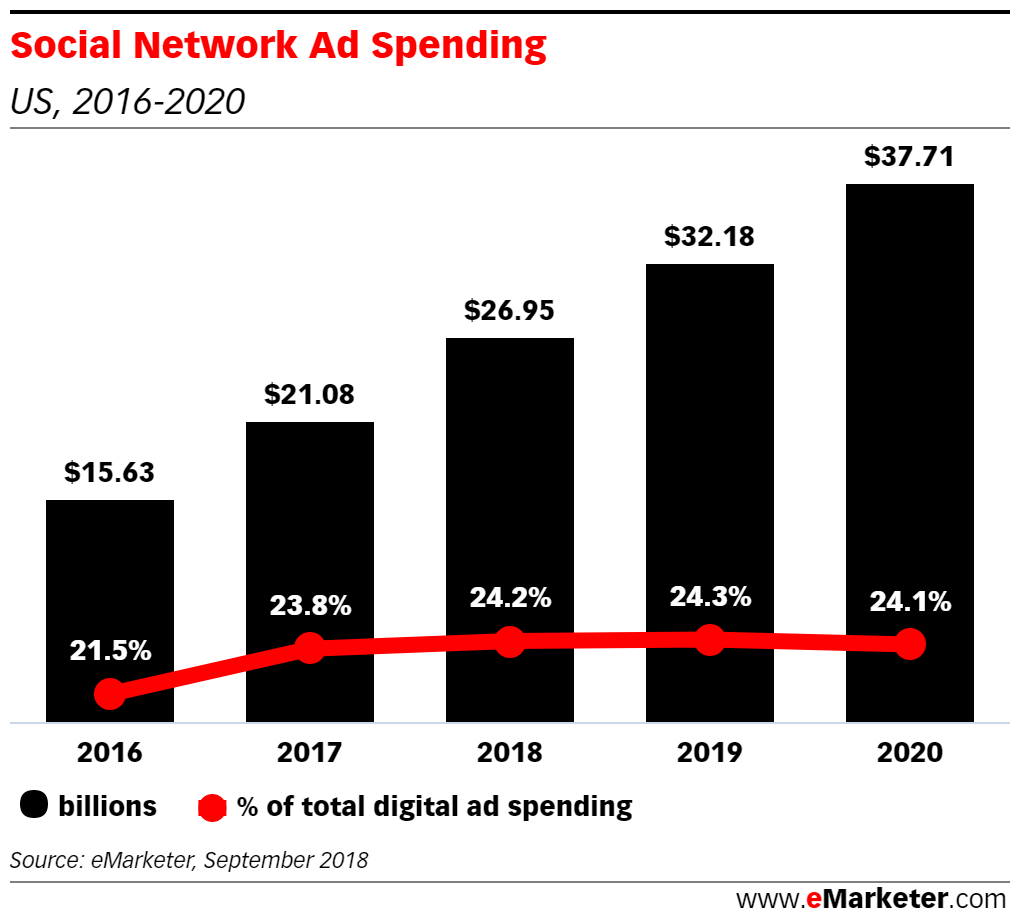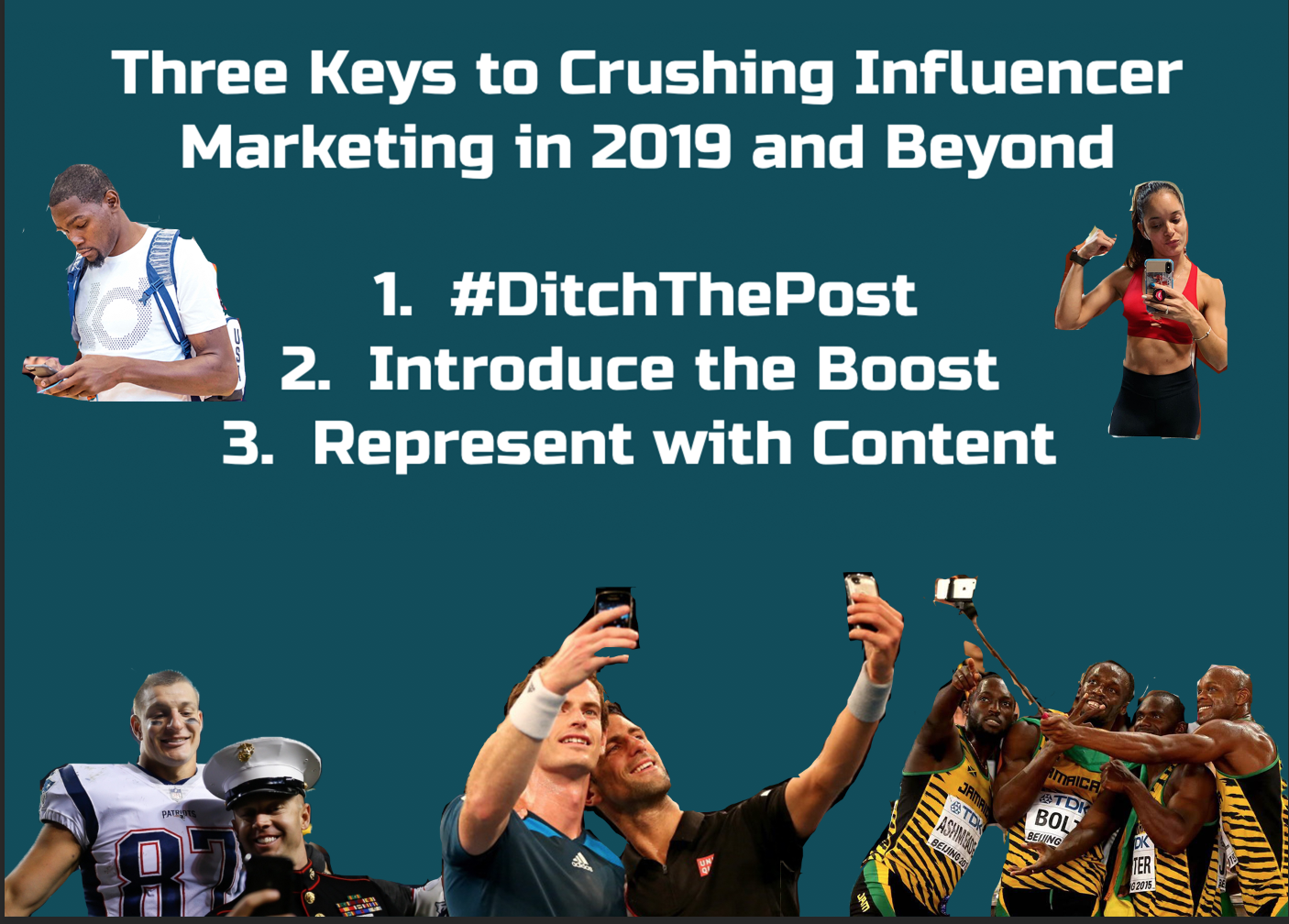If you are reading this, there is a great chance you are either interested in or are already heavily involved in the ever-evolving world that is social media marketing. By now, we all know the power of social ads - more than $32 billion - yes, billion with a B - is projected to be spent on social platforms in 2019 globally. The New York Times even published an article on July 15, titled, “Don’t Scoff at Influencers. They’re Taking Over The World,” in which it states, “... as social media expands its cultural dominance, the people who can steer the online conversation will have an upper hand in whatever niche they occupy — whether that’s media, politics, business or some other field.”

(Graphic courtesy of eMarketer.com)
In the second quarter of 2019 alone, brands spent $442 million on influencer marketing in the United States and Canada. Yet, while seemingly every brand is getting in on the action, who is actually winning? Is it enough to simply partner with influencers - whether traditional or in specific spaces such as professional sports - without formalizing plans or laying out success metrics to ensure it is worthwhile? This post will take you through three simple yet crucial tactics (and no, I promise not to talk about authenticity - you can search “authentic influencer” on Google News and it will spit out 300-plus results in 0.18 seconds) - that can rewrite your influencer strategy overnight, help maximize your budget and ultimately turn you into the office hero.
1. #DitchThePost
Unless you’re an established brand with millions of dollars in annual revenue, it may be difficult to justify influencer spends without having already proven some level of success. You desperately want to give influencer marketing the chance it deserves, but you cannot allow it to fall flat. We hear you - and have the solution.
Instagram Stories.
You are probably thinking, “Yeah, Matt. I, uh, know what an Instagram Story is… what’s the big deal?” The big deal, my fellow influencer marketing-enthusiast, is that I’d assume for every influencer you are discussing an IG Story with, you’re probably discussing at least one, if not more, Instagram posts to go along with that Story. I’m here to tell you to #ditchthepost.
Instagram posts, while valuable in the sense that they live on the feeds of the influencers for, ideally, ever, don’t have the impact you may think they have. Stories, on the other hand, are a) dramatically less expensive, b) favorable among millennials (and let’s be honest, who isn’t targeting the millennial demographic?) and c) increase conversion rates.
At OpenSponsorship, athletes are jumping at Instagram Story-only campaigns at 50% below market rate. As lacrosse star Bill O’Brien explained to OpenSponsorship, “Athletes undervalue stories due to the fact that they are easy to create. But I also found that a brand is likely going to receive higher engagement and more purchases through stories because the followers who watch your stories are more invested in what you have to offer and it’s more personal.”
Yes, stories are only temporary, but the value they are providing in those 24 hours is tremendous. Influencers who have 10,000 followers or more are able to include a link in the Story, allowing followers to swipe up to the landing page of their choosing. This is much more conversion-friendly than the in-feed post, in which links cannot be included within captions.
Given that 500 million users and 60% of millennials watch Instagram Stories on a daily basis, coupled with the fact that one in four millennials and Gen Z actively seek videos of products and services they are considering buying, it appears that the Instagram Story - armed with its swipe up feature and its ease for influencers - is a no-brainer for brands looking to get the most bang for their buck and internally prove the success of influencer marketing.
2. Introduce The Boost
The significance that brands place on paid media is obvious - just refer to the aforementioned statistic - $32 billion is expected to be spent on social ads worldwide this year. Given that seemingly every company understands the importance of online marketing, the differentiator is not just doing it, but how to do it.
Rather than amplifying content on brand social channels, more companies should begin boosting posts from the pages of their actual influencers. This a) can open up your brand to a new audience and b) exudes authenticity (I know I promised not to discuss the A word, but bringing it up just once in a piece entirely focused on influencer marketing may be a record, anyway…).
The tricky part of this, of course, is actually gaining access to the influencers’ accounts to be able to boost the content. This is where OpenSponsorship comes into play. Given our relationships built up over years with athletes and their management teams, most of them trust us to run the boosting from their accounts - from high-profile NFL players to gold medalist Olympians.
This is also beneficial to the athletes - their content (which, if the brand is choosing to put paid media behind it, must be high quality) is now going to be seen by thousands or even millions of more people, allowing their own personal brands to grow, free of charge.
3. Represent With Content
You can listen to the first two steps to a tee, but without great content, there is a high chance you won’t see much ROI without this. “Content is King,” Bill Gates wrote in 1996 (I realize he wasn’t referring to the yet-to-be-born space of influencer marketing, but the point remains).
If you are working with influencers, I am assuming you have checked out their profiles and are agreeing to a partnership with an expectation of the level of the content they will produce. While you are well in your right to have that expectation, all products are different. All influencers are different. They have busy lives just like all of us, and it is important to be specific in what you are looking for them to create. At OpenSponsorship, we encourage our brands to provide creative briefs to share with the athletes, ensuring all parties are on the same page.
For brands on a budget, another way to get the most out of an influencer marketing program is to work with influencers who will produce jaw-dropping, viral-inducing content and simply ask for the content with the intention of repurposing it - not for them to post in their own feeds. The reason for this is a) because of what we discussed earlier - influencers put an extremely high value on what they post in their feeds b) while there are certainly benefits in having content in the feeds of influencers that live there forever, Instagram actually encourages users to see the latest content posted, even launching a “you’re all caught up” notification two years, which pops up after its users have seen all new posts from the last 48 hours.
At OpenSponsorship, we acknowledge the sometimes-complex world of influencer marketing and the pressure in 2019 to see immediate ROI. With social media changing by the day - most recently Instagram announcing they are now hiding the “like” count from posts in seven countries as an attempt “...to focus on the photos and videos you share, not how many likes they get,” - brands must adapt. As CNBC wrote on July 21, “...marketing experts say the changes could also further incentivize brands to put paid media support behind their influencers posts, and also to focus on Instagram Stories… The potential change could also mean that influencer content will need to become higher quality, since users won’t be able to lean on the amount of likes their posts are receiving when a brand considers working with them.”
We believe that by following the three steps - a) #ditchthepost, instead focus on crushing engagement and click-throughs with Instagram Stories b) invest in amplification! And use OpenSponsorship to do all of the heavy-lifting :) and c) differentiate the content that the influencers create and the act of actually posting it in their feeds - it will be challenging for companies to not increase influencer marketing budgets. For startups in today’s world, this is a realistic and highly effective strategy to generate ROI and ultimately push your company in the right direction.

